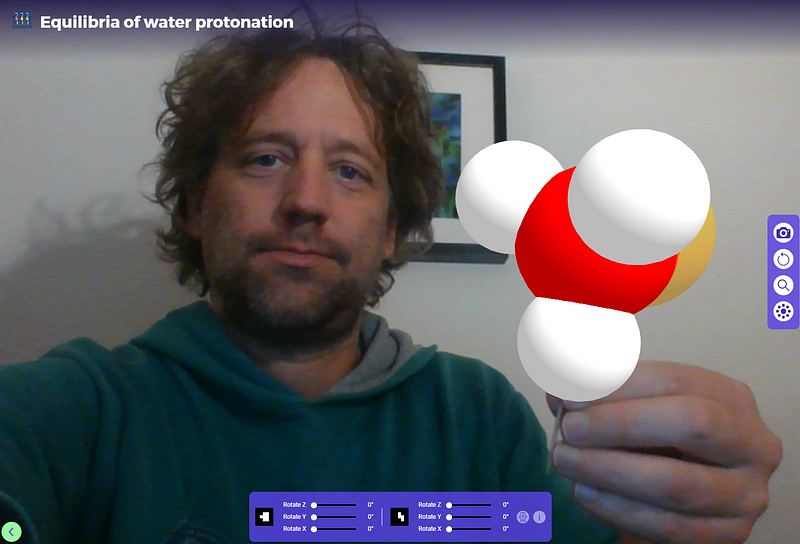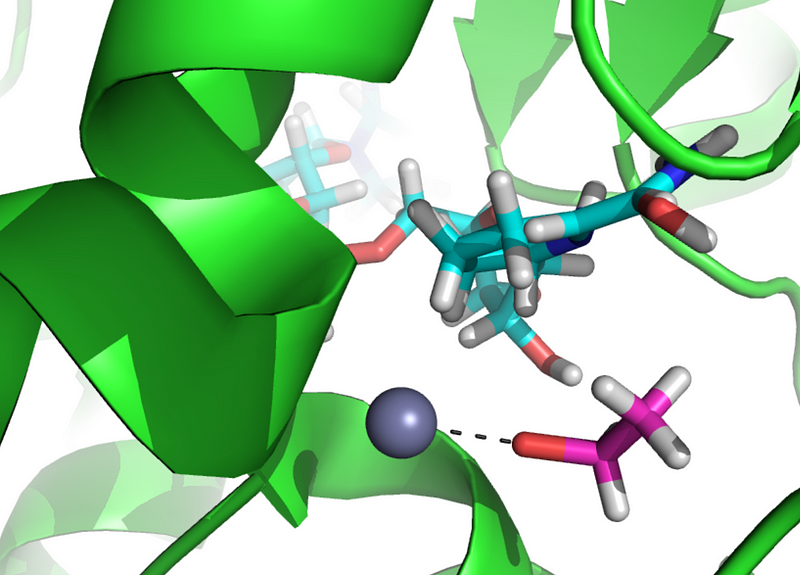Celebrating Alcohol Dehydrogenase: The Unsung Hero of Metabolism
Written on
The Role of Alcohol Dehydrogenase
When you’ve had one too many drinks, your body is signaling that it has reached its limit, largely thanks to the enzyme known as alcohol dehydrogenase. This essential enzyme facilitates the breakdown of alcohol in our system, converting it into acetaldehyde, which is subsequently transformed into acetic acid. While both alcohol and acetaldehyde are harmful, acetic acid is significantly less toxic.

Understanding "Dehydrogenase"
The term "dehydrogenase" is quite straightforward: this enzyme alters alcohol (with the formula C₂H₅OH) into acetaldehyde (C₂H₄O). In a simplified reaction, it can be represented as:
C₂H₅OH → C₂H₄O
Notice the difference in hydrogen atoms: there are six on the left and four on the right, indicating that the enzyme has removed hydrogen from the alcohol molecule.
However, is hydrogen being produced? Not exactly! The complete reaction involves additional components, including a molecule called NAD (a complex molecule) and one molecule of water. Each of these takes one hydrogen atom:
C₂H₅OH + NAD + H₂O → C₂H₄O + NADH + H₂O⁺
Here, H₂O⁺ represents a form of water that has gained an additional hydrogen atom, becoming positively charged—a single proton, to be precise. This tiny molecule can be visualized using augmented reality tools like moleculARweb:

The Mechanism of Alcohol Dehydrogenase
The active site of alcohol dehydrogenase (depicted in green in the simplified diagram) binds ethanol (shown in magenta) through a zinc ion (grey sphere), initiating the conversion process:

Importance of Alcohol Dehydrogenase
Beyond alleviating hangover symptoms, alcohol dehydrogenase plays a crucial role in shielding our bodies from alcohol’s toxic effects. Without this enzyme, individuals could experience severe reactions, including flushing, nausea, and potential organ damage.
Interestingly, while this enzyme allows humans to enjoy alcoholic beverages, its primary evolutionary function likely pertains to breaking down naturally occurring alcohols in food and those produced by gut bacteria. Additionally, it is involved in metabolizing retinol (vitamin A), transforming it into retinaldehyde, which is then converted into retinoic acid—an essential regulator of gene expression.
A Toast to Alcohol Dehydrogenase
So, the next time you raise a glass, remember to acknowledge alcohol dehydrogenase. Without its presence, coping with the effects of alcohol would be a much more challenging endeavor.
Further Reading and References
To learn more about alcohol dehydrogenase, check out:
For a deeper dive into the biochemical mechanisms, view these videos:
Video Description: This video explains how alcohol metabolism occurs in the body, focusing on the role of alcohol dehydrogenase.
Video Description: An in-depth look at the physiology, biochemistry, and mechanism of alcohol dehydrogenase, detailing its critical functions.